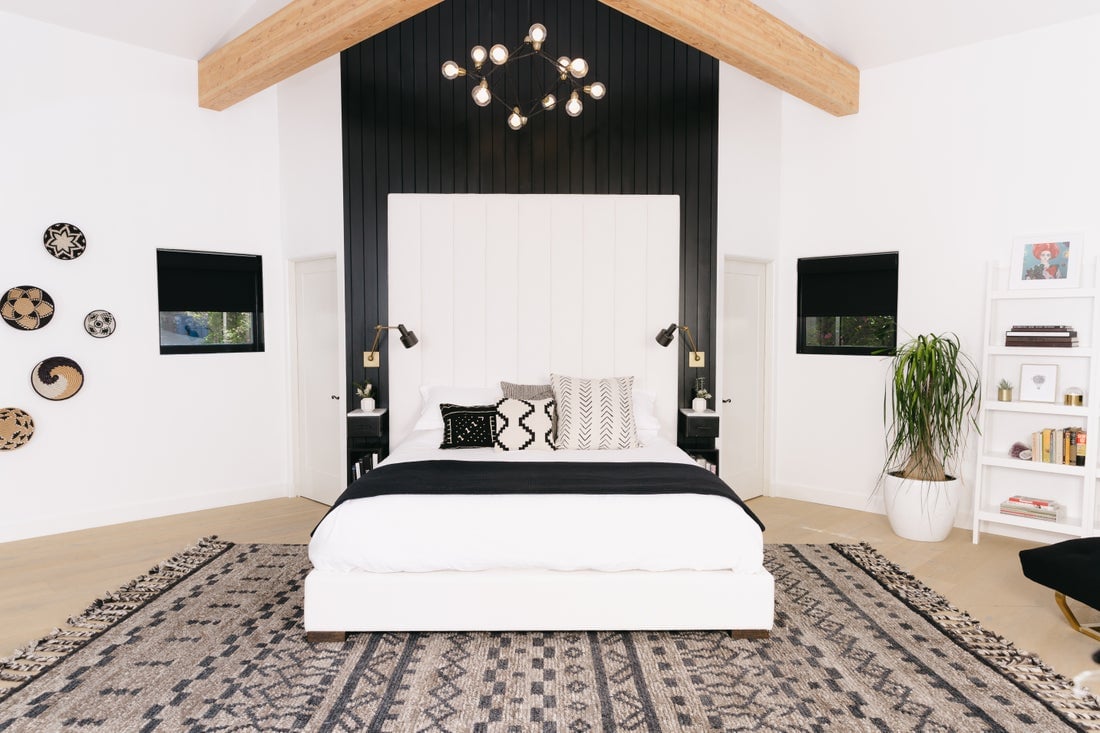Few pieces can transform a room quite like an area rug. From textural jute beauties to colorful Turkish kilims (we see you, Etsy), rugs can tie a room together or even serve as the backbone of an entire design concept.
This is especially true in bedrooms. No matter how many pillows or throw blankets you layer on a bed, these spaces just don’t feel complete without a cozy area rug. But of course, selecting the right rug for your bedroom can be more complicated than just click and buy — especially when it comes to size.
Since investing in a rug that’s either too big or more often than not, too small, is such a common design faux pas, we decided to do a deep dive. Ahead, find everything you need to know about choosing the best rug size for your bed.
How to Choose the Best Rug Size For Your Bed
Generally speaking, bedroom rugs are meant to add warmth, texture, and pattern to a space while creating a sort of visual border around your bed. Rectangular rugs are best given the shape of mattresses and bed frames, but square rugs are also popular. While the exact dimensions will vary depending on the size of your room, mattress, and frame, you should always have a minimum of 18 to 24 inches of rug on each side of your bed frame.
The below chart outlines the ideal rug size for each mattress (keep in mind that there is some flexibility here):
| Bed Size | Rug Size |
|---|---|
| Twin (38” x 75”) | 5’ x 8’ or 6’ x 9’ |
| Full (53” x 75”) | 6’ x 9’ or 8’ x 10’ |
| Queen (60” x 80”) | 8’ x 10’ or 9’ x 12’ |
| King (76” x 80”) | 9’ x 12’, 10’ x 14’ or 12’ x 15’ |
| California King (72” x 84”) | 9’ x 12’, 10’ x 14’ or 12’ x 15’ |
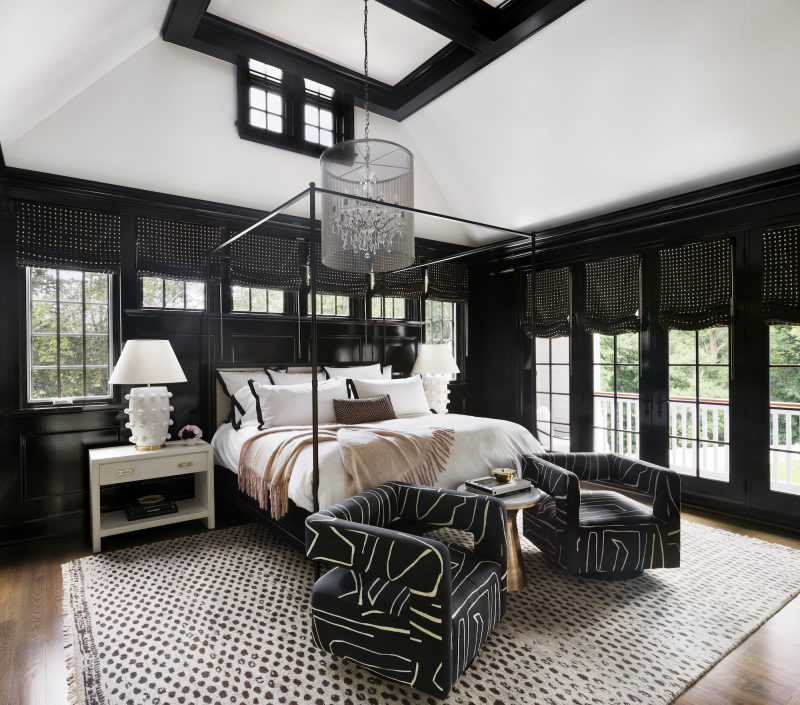
How to Style a Bedroom Area Rug
Next, consider rug placement. There are three basic ways to style a bedroom rug: with the bed 100% on the rug, the bed partially on the rug, or using decorative runners or smaller vintage rugs along the side or foot of the bed. The first option requires a larger rug, while the second and third allow for a bit more flexibility.
1. Bed 100% on the Rug
Placing the entire bed on the rug is probably the most common style, not to mention the coziest. Of course, it does require a larger rug, especially if you want the nightstands and any end-of-bed furniture, like a bench, to sit underneath it as well. Bigger is usually better, but remember to leave about 18 inches of exposed floor space around the perimeter of the room for a little visual breathing room.
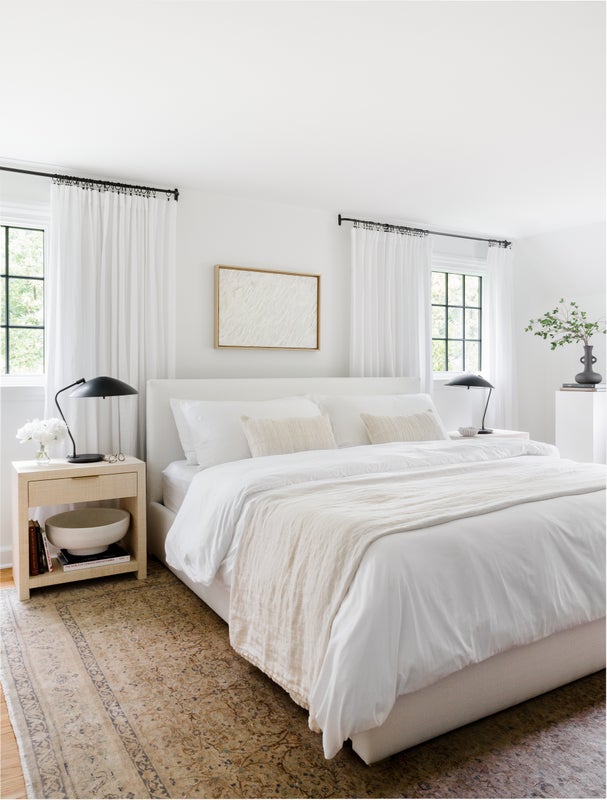
2. Bed 75 to 25% on the Rug
If you’re lacking the space for an oversized rug or simply trying to make a smaller one work in your space, you can place it underneath the lower half to one-third of your bed. While this approach leaves the head of your bed and nightstands on the bare floor, it still ties your bedroom together and helps create a warm, inviting atmosphere. This is also a great option when accommodating furniture at the foot of your bed, like a storage bench or settee.

In smaller rooms with full or twin-size beds off-center or up against a wall, consider positioning the rug vertically or parallel to the bed for an unexpected twist. Just make sure that the rug extends beyond the edge of the bed!

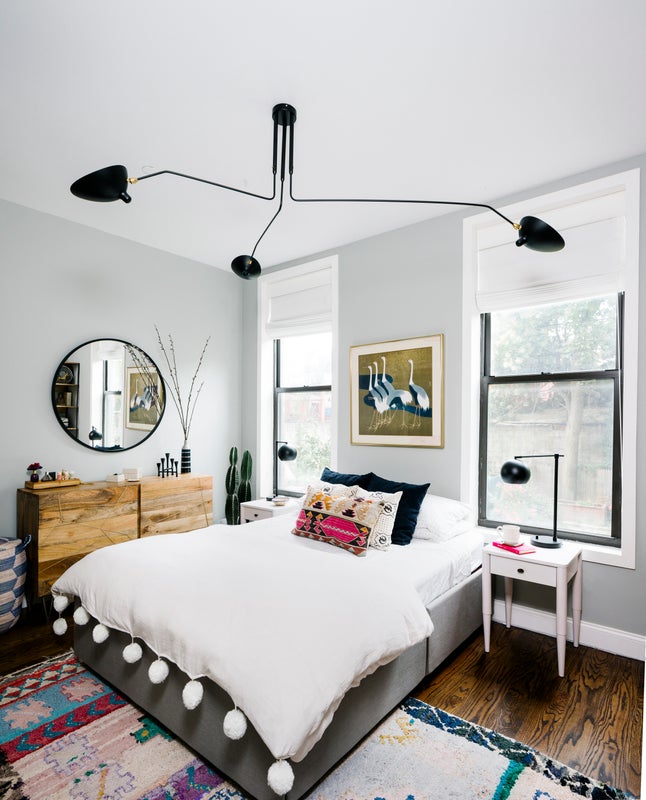
3. Runners, Vintage Rugs, and Furs
If you’re working with a vintage rug in a unique size or shape, consider styling the rug alongside the foot of the bed or in front of a piece of furniture, like a dresser. It’s better than nixing it altogether and you can always layer a larger jute rug underneath for additional texture and warmth.
If you’re trying to cut costs, consider flanking your bed with two narrow runners. They provide significant coverage and make a design impact without breaking the bank! Similarly, we love the look of a small faux fur rug flanking your bed for those hygge vibes (and your bare feet will thank you each morning).
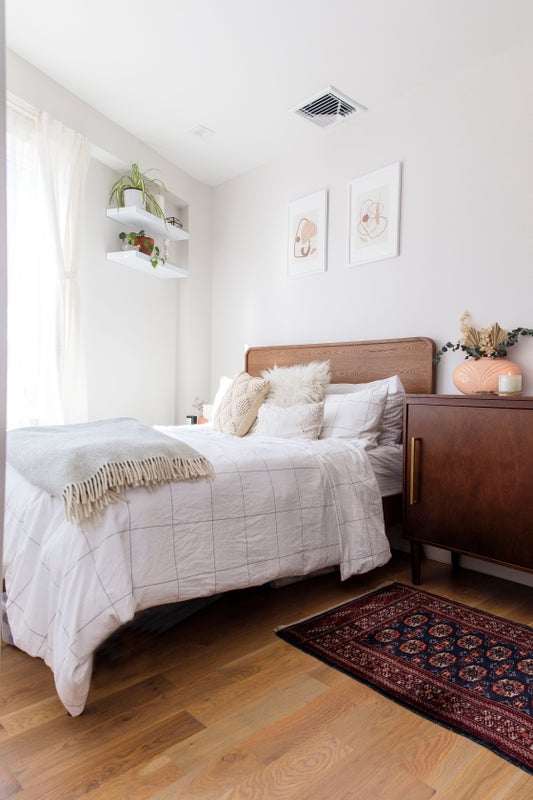
For all the practical styling advice and design fundamentals that make a space sing, book a professional designer to help you break it down, room by room. Get started with our style quiz.

